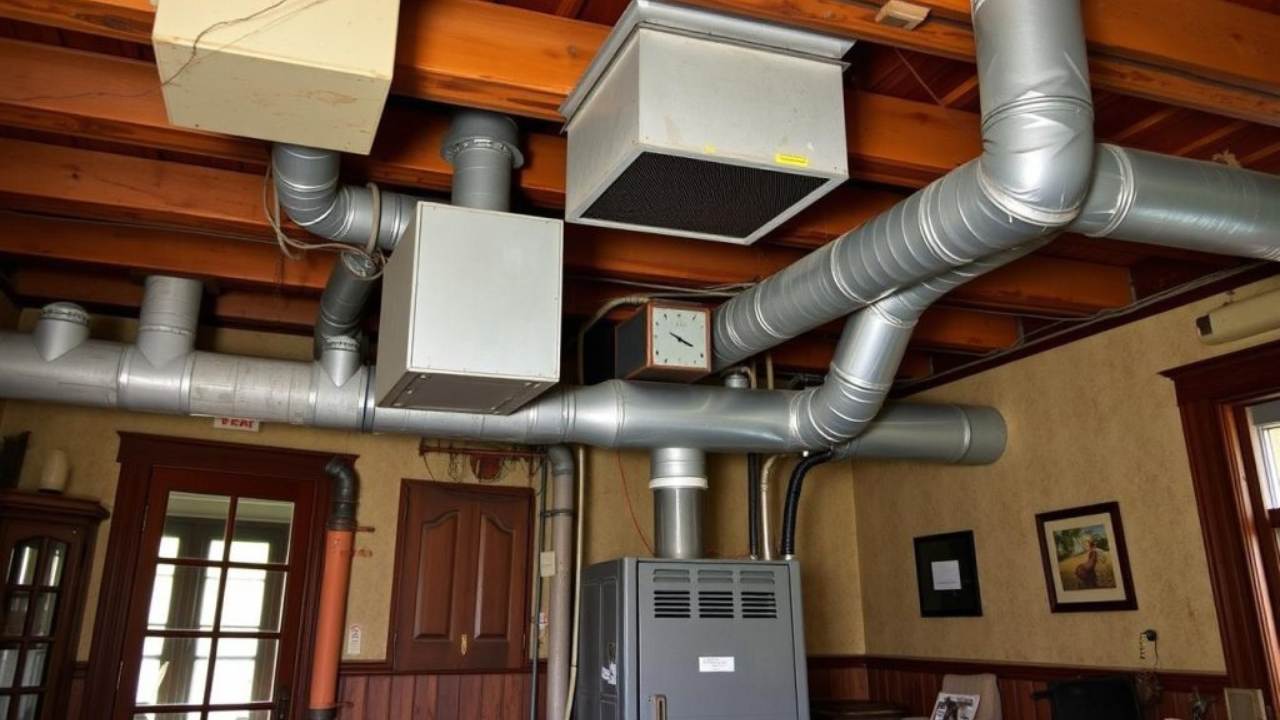Adding a mechanical ventilation with heat recovery (MVHR) system to an older home can be a smart choice, especially if you’re looking to improve air quality and reduce energy waste.
However, it’s not always a simple job. Older houses often come with challenges like limited space, poor insulation, and tricky layouts that weren’t designed for modern ventilation. That’s why planning ahead is so important.
So in this blog, we’ll walk you through what you need to know before retrofitting MVHR in older homes, including common problems and how to solve them. We’ll also explain the key benefits you can expect so you can make the best choice for your home and comfort.
What You Need to Know Before Retrofitting MVHR in Older Homes?

Fitting a Mechanical Ventilation with Heat Recovery (MVHR) system into an older property can be tricky. Older buildings weren’t designed with modern ventilation in mind, so you might face a few obstacles. But with the right planning and advice, it’s definitely possible. Here are 10 important points to think about, including common issues and how you can fix them:
1. Check the Existing Layout
Challenge: Many older homes don’t have the space or ducting routes needed for MVHR.
Solution: Do a full review of the property layout before starting. If traditional ducting doesn’t fit, look into surface-mounted options or more compact system designs.
2. Deal with Air Leaks and Gaps
Challenge: Air leakage through cracks and gaps can reduce the efficiency of MVHR systems.
Solution: Seal up the building envelope. Use draught-proofing methods like weather stripping, caulk, and better insulation to reduce air leaks and improve system performance.
3. Getting the Airflow Right
Challenge: Older houses often have unusual layouts, which can make it hard to balance the airflow properly.
Solution: Use adjustable vents and airflow dampers. In problem areas, booster fans can help maintain good ventilation.
4. Minimise Noise and Vibrations
Challenge: Older properties with thinner walls and floors may let more noise and vibration through.
Solution: Choose MVHR systems known for quiet operation. Use vibration pads or mounts and add acoustic insulation if needed to keep noise down.
5. Boost Energy Efficiency
Challenge: Poor insulation in older homes can reduce the energy-saving benefits of MVHR.
Solution: Improve insulation in key areas like walls, lofts, floors, and windows. This helps retain heat and makes the MVHR system work more effectively.
6. Connect to Existing Heating Systems
Challenge: MVHR may be difficult to link with old heating systems like radiators or boilers.
Solution: Make sure the new system can work alongside your current heating setup. Pre-heating or post-heating coils in the MVHR unit can help manage temperatures more efficiently.
7. Allow for Easy Maintenance
Challenge: Access to MVHR parts for maintenance can be limited in old homes.
Solution: Design the system so that filters and other components can be reached easily. Use access panels in smart locations for servicing.
8. Control Condensation
Challenge: Moisture can build up in the ductwork, leading to damp problems or mould.
Solution: Use insulated ducts, fit condensate drains, and make sure areas like kitchens and bathrooms are well ventilated to manage moisture levels.
9. Smart Controls and Monitoring
Challenge: Older houses might not have good systems for managing air quality.
Fix: Fit modern control units that let you monitor things like humidity and carbon dioxide levels. These can help you adjust settings for comfort and health.
10. Follow Rules and Regulations
Challenge: You’ll need to meet building standards when retrofitting MVHR.
Fix: Hire experienced professionals who know the local regulations. Make sure you have detailed plans, the right permissions, and meet all safety and performance requirements.
What are The Benefits of MVHR in Older Homes?

Even if your property wasn’t recently built, you can still enjoy a range of practical and long-term improvements by installing an MVHR system. Let’s look at how it can make a real difference to your comfort, energy use, and air quality.
Improved air quality throughout the year
Older homes can sometimes feel stuffy or damp, especially during colder months. MVHR helps to keep fresh air moving through the house while removing stale or polluted air at the same time. This creates a healthier living space with better air to breathe every day.
Less condensation and damp issues
During winter, it’s common to notice windows fogging up or damp patches on walls. An MVHR system helps reduce this by removing excess moisture from the air. As a result, your home stays drier, which can help prevent mould or musty smells.
Lower energy use from reduced heat loss
With MVHR, fresh air enters the home without letting heat escape through open windows. This means you can keep warm without using extra energy. Over time, this could lead to lower heating bills, which is a welcome benefit for many households.
Fresh air without having to open windows
Opening windows isn’t always practical, especially in noisy areas or during poor weather. MVHR brings in filtered fresh air automatically, so your home stays well ventilated without relying on outdoor conditions. This is especially helpful for rooms that are often closed up.
Cleaner home with fewer allergens
Many people notice they sleep better and feel more comfortable when the air is cleaner. MVHR helps filter out pollen, dust, and other irritants. Over time, you may find there’s less dust settling on surfaces and the air simply feels fresher throughout your home.
Conclusion
Retrofitting an MVHR system in an older home can bring real benefits. However, it’s important to plan carefully and understand the challenges involved. From the start, factors like limited space, airflow issues, insulation, and noise control all need to be considered for the system to work effectively. By taking the time to address these areas, you can avoid costly mistakes and enjoy better air quality and comfort.
If you’re feeling unsure, Ventsolve is here to help. With expert advice and practical support, tailored to your property, you can move forward with confidence. Contact Ventsolve today to make your MVHR retrofit a smooth and successful experience.
FAQ’s
1. Is it possible to retrofit MVHR in an old house?
Yes, it is possible, although older homes may lack the space and structure needed for modern ductwork. With careful planning and suitable design solutions, MVHR can still be successfully installed.
2. What should be checked before installing MVHR in an older property?
Before beginning installation, it’s important to assess the layout and available space for ducting. Some homes may need compact or surface-mounted ductwork to fit within existing structures.
3. How does poor insulation affect MVHR performance?
Poor insulation can reduce the energy-saving benefits of MVHR. Improving insulation in walls, floors, roofs, and windows helps reduce heat loss and supports the system’s overall efficiency.
4. Can MVHR systems cause noise problems in older homes?
MVHR units can produce noise, especially in homes with thin walls or floors. Choosing quieter models and using vibration pads or acoustic insulation helps keep things quieter.
5. Do older homes need extra work to control condensation with MVHR?
Yes, if not installed correctly, moisture can build up in the ductwork. Insulated ducts, good drainage, and proper airflow in damp areas help reduce the risk of condensation or mould.
6. Is planning permission or approval required for MVHR in older homes?
Sometimes, depending on your local rules. It’s best to work with professionals who understand building codes and can ensure the system meets all legal and safety standards.


